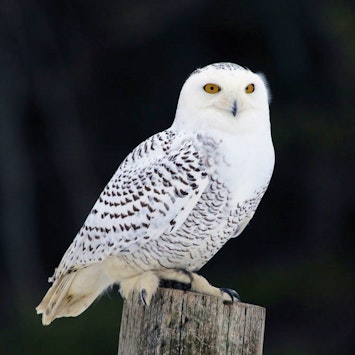The showy, snowy owl
Discovery Place Nature

If you were still hoping for a magical letter inviting you to a wizarding school, you might have gotten unusually excited recently, having spotted a large white owl in the sky. Or, if you are an avid birder interested in rare sightings, you also might have cause for celebration.
While we have four common species of owls in our area (the great horned, barred, screech, and barn), there’s a pure white gatecrasher that’s been showing up in unusual numbers this year.
Closely related to great horned owls, snowy owls are typically found in the far north of our continent, close to Canada and the North Pole. But every few years, for reasons scientists are still trying to discern, the snowy owl population undergoes an “irruption.”
Hundreds or even thousands of these huge, showy raptors will abruptly turn south and fly hard and fast, travelling many miles out of their established territories for no apparent reason.
There are numerous theories, but one has yet to be specifically proven. Some believe this is a natural attempt to expand their range. Others feel it might be the result of human-induced climate change, pollution or some other, more sinister variable.
For whatever reason it occurs, these irruptions are a boon for curious birdwatchers.
For some of these snowy owls, their sudden migration can prove dangerous, and some require assistance to return to their northern homeland. The journey is strenuous, and many require the aid of wildlife rehabilitators to get back to the sky.

While they are just as adaptable in their diet as other members of the owl family, snowy owls prefer lemmings as the main staple of their diet. They can easily consume 3-5 per day! And there are no lemmings in North Carolina.
These owls are unusual not just for their large size and splendid coloration, but also for their habits. Unlike most owls, they are diurnal, or daytime, hunters.
This characteristic behavior means they are unlikely to go unnoticed during irruptions. They’re awake and active at the same time that human beings are.
They are most commonly spotted around airfields and airports. Scientists believe that those wide stretches of pale concrete more closely resemble the terrain the snowy owl prefers. They also tend to show up close to our white sandy beaches on the Carolina coast for the same reason.
While most people will only get to see a snowy owl in photos or on the big screen, a few lucky folks have a better chance than ever of spotting this unusual visitor to our region this winter — if they keep their eyes to the sky. Good luck!


